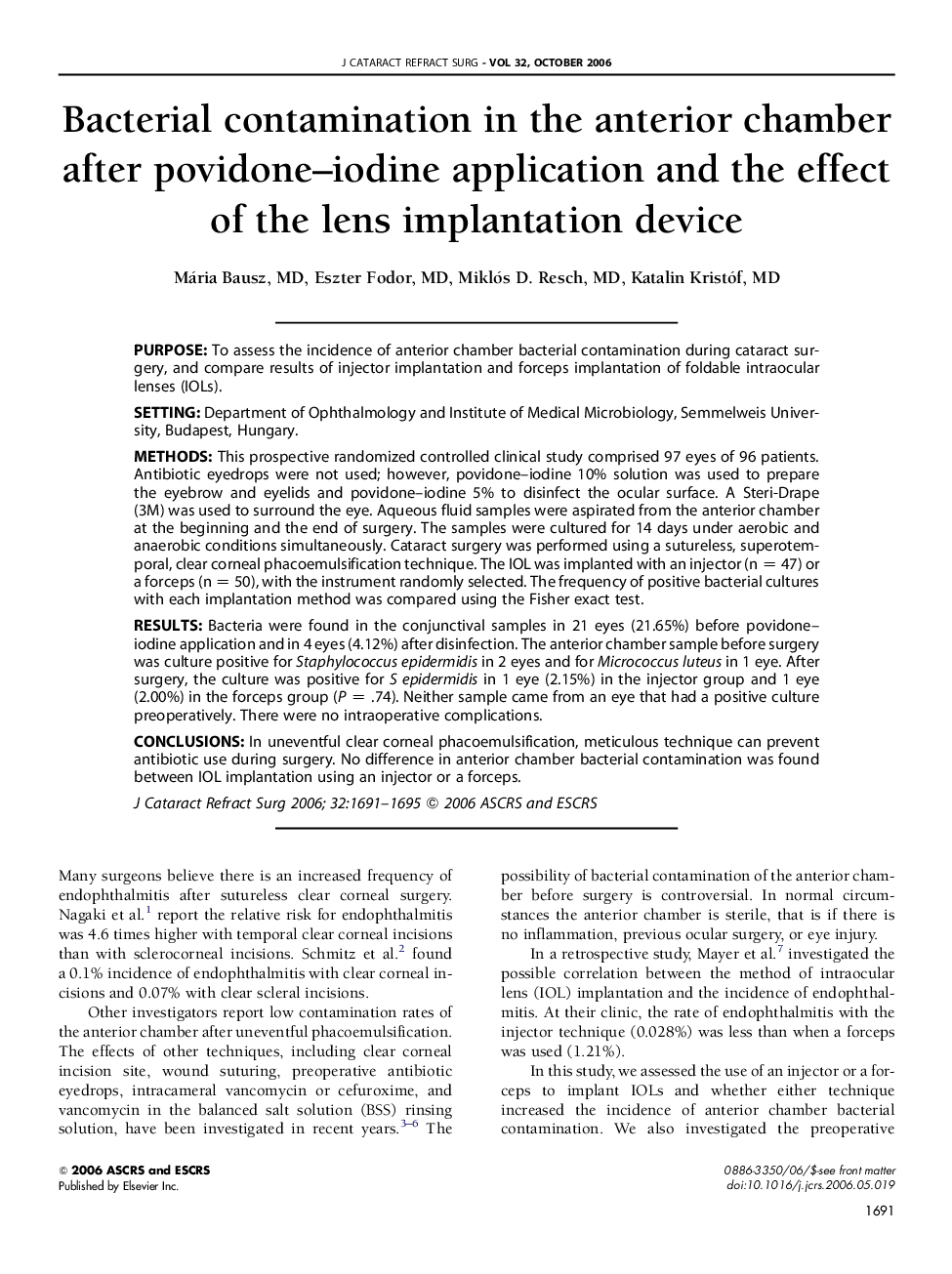| Article ID | Journal | Published Year | Pages | File Type |
|---|---|---|---|---|
| 4022267 | Journal of Cataract & Refractive Surgery | 2006 | 5 Pages |
PurposeTo assess the incidence of anterior chamber bacterial contamination during cataract surgery, and compare results of injector implantation and forceps implantation of foldable intraocular lenses (IOLs).SettingDepartment of Ophthalmology and Institute of Medical Microbiology, Semmelweis University, Budapest, Hungary.MethodsThis prospective randomized controlled clinical study comprised 97 eyes of 96 patients. Antibiotic eyedrops were not used; however, povidone–iodine 10% solution was used to prepare the eyebrow and eyelids and povidone–iodine 5% to disinfect the ocular surface. A Steri-Drape (3M) was used to surround the eye. Aqueous fluid samples were aspirated from the anterior chamber at the beginning and the end of surgery. The samples were cultured for 14 days under aerobic and anaerobic conditions simultaneously. Cataract surgery was performed using a sutureless, superotemporal, clear corneal phacoemulsification technique. The IOL was implanted with an injector (n = 47) or a forceps (n = 50), with the instrument randomly selected. The frequency of positive bacterial cultures with each implantation method was compared using the Fisher exact test.ResultsBacteria were found in the conjunctival samples in 21 eyes (21.65%) before povidone–iodine application and in 4 eyes (4.12%) after disinfection. The anterior chamber sample before surgery was culture positive for Staphylococcus epidermidis in 2 eyes and for Micrococcus luteus in 1 eye. After surgery, the culture was positive for S epidermidis in 1 eye (2.15%) in the injector group and 1 eye (2.00%) in the forceps group (P = .74). Neither sample came from an eye that had a positive culture preoperatively. There were no intraoperative complications.ConclusionsIn uneventful clear corneal phacoemulsification, meticulous technique can prevent antibiotic use during surgery. No difference in anterior chamber bacterial contamination was found between IOL implantation using an injector or a forceps.
